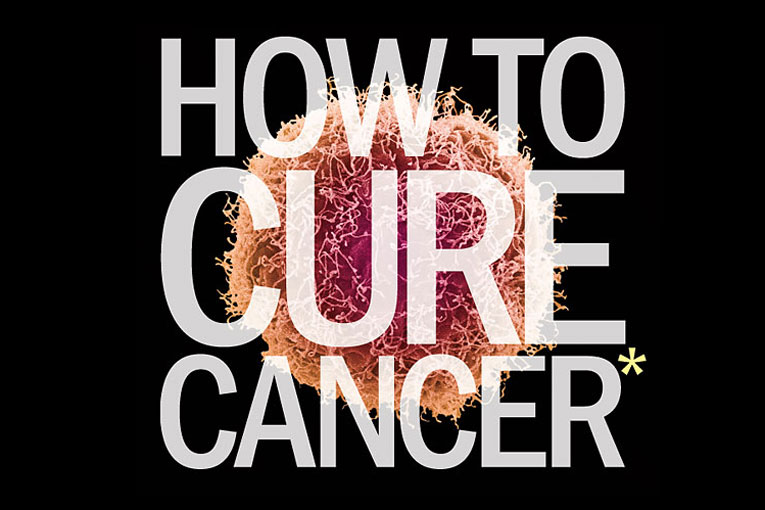
 |
||
|
Never let facts spoil a good headline. Or a good cover, we may add. This sentence, often used to talk about the gutter press, fits this case: in early April, Time magazine shocked the world with a cover that featured a full-page message in capital letters: «HOW TO CURE CANCER». This headline incorporated an asterisk (*) —which is not very common— that led to this note: «Yes, it’s now possible— thanks to new cancer dream teams that are delivering better results faster». Claiming on the cover page that now it is indeed possible to cure cancer is overstating the facts, and —ultimately— false. We can imagine the kind of excitement this type of headlines arouse among cancer patients and their relatives, who are waiting for an ultimate cure for cancer. And this way, while most oncologists repeat once and again that there is no magic formula and that what we need to do is keep on working in knowing better each one of the many signs of the disease, covers like this one destroy any attempt to approach the topic seriously. The article —which inside the magazine is entitled «The Conspiracy To End Cancer»— is written by Bill Saporito and introduces the topic on a warlike note: «It works as one great armed force, attacking by the equivalent of air and land and sea and stealth, and we think we’re going to take it out with what? A lab-coated sniper?» Saportio quotes the MIT researcher Philip Sharp to emphasise that the disease «is much more complex than we have been treating it» and, therefore «it will take not one hero but many. Sharp — a Nobel Prize-winning molecular biologist who studies the genetic causes of cancer — is recruiting special-forces units to fight back». These special force units are the dream teams the cover refers to and which have been promoted for four years by Stand Up to Cancer, —an organisation devoted to fight cancer that was founded by people linked to the entertainment industry who are capable of raising funds—. Of course, generously funded first-rate research teams would definitely contribute to a fast progress in cancer treatment. In this sense, they are indeed remarkable and much needed projects. However, directly linking the existence of these groups to some kind of magic formula that cures cancer is, at the very least, exaggerating and shows a lack of rigour. This is why some media have raised their voice against the way the magazine approached the topic. In an article published in Slate.com, the journalist and writer Seth Mnookin considers it a good candidate to be chosen worst cover of the year. Paul Raeburn also analyses the cover in an article for Tracker, the MIT’s blog Knight Science Journalism Program. In Spanish media, José Luis de la Serna —physician and El Mundo collaborator— branded the cover «excessive». a common practice Why is the need to risk so much when talking about cancer there? Obviously, the cover has to be appealing enough to catch the reader’s attention. The thing is considering up to what point can we distort and exaggerate reality with this purpose. Obviously the cover was intended to shock the readers. The problem is that when we talk about cancer we have to be especially rigorous because it raises greater expectations than other topics. Cancer directly affects many people, and stating that it is possible to cure cancer, in general and right now, is too daring for such an influent publication like Time. In fact, this is not the first time that prestigious media «cure cancer». A very interesting article by Gemma Revuelta and published by Quark magazine in 1998 analyses and reflects on the sensationalism of this kind of covers, written after the publication of a very similar story in The New York Times. The newspaper published an excessively optimistic article on a new treatment that opened the doors to the cure for cancer and experimenting… only with mice. As Nature Clinical Practice Oncology‘s editorial claimed (2007) the mass media play a major role in defining public attitudes towards cancer: «Unfortunately, the media coverage of cancer is quite frequently of poor quality. This type of reporting can reinforce the myth that cancer is an automatic death sentence, promote fear and stigma, and spread false hopes by uncritically promoting ‘wonder cures’». The last remark turns out to be especially disappointing for both the patients and the relatives who access this information. Influent media like Time magazine should bear in mind that the way they choose to approach the topic contributes to the way society perceives this illness. Contributing to raise false expectations with a shocking headline thinking that later on the text will explain everything is a mistake. It is as if it was not necessary to follow some rules or respect some boundaries anymore. Journalism is based on a «credibility» pact with the reader. It seems that this contract is now more loosed and accuracy can be left out if it is an obstacle for a good headline. Lucía Sapiña. The Two Cultures Observatory. |
«Contributing to raise false expectations with a shocking headline thinking that later on the text will explain everything is a mistake» |
|

 © Time
© Time



